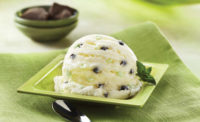Inclusions are much more than just toppings on a favorite dairy brand. They can drive sales of a dairy product to a new stratosphere based upon the ability to enhance a flavor profile.
The market for inclusions is expected to increase at a 5.7% compound annual growth rate (CAGR) to slightly higher than $18 billion by 2028, according to “Food Inclusions Market to 2028 — Global Analysis and Forecast — by Type, Form, and Application,” a report produced by The Insight Partners.
The report concludes the market for food inclusions is significantly competitive due to the presence of several regional and local manufacturers and buyers. “The market is expected to remain lucrative during the upcoming years due to the widening applications of food inclusions,” the report states.
Not surprisingly, dairy products are a major application for inclusions. According to Mintel, among product introductions in the past two years, nearly one in two ice cream products contain one or more inclusions.
“Even outside of the traditionally inclusion-centric markets like ice cream and frozen yogurt, inclusions have become imperative. Cottage cheese is having a moment right now thanks to TikTok trends and diet-hacks.”
— Amanda Cardinal, marketing coordinator for Pecan Deluxe
Taste will always reign, and consumers want variety. They want color, taste, and texture as part of their food experience. This is achieved by adding inclusions, such as variegates and pieces, suggests Shannon Fitzgerald, marketing manager for Montvale, N.J.-based Balchem Corp.
“Their variety of textures can range from ooey gooey to crispy crunchy. They allow us to introduce certain textures and flavor profiles such as graham cracker, cereal, cookie crumbles, pretzel pieces, salty and sweet all while retaining their original form,” Fitzgerald notes.
“I feel that adding inclusions in the dairy sector has come to be expected by the consumer,” relays Walter Waters, director of innovation for Dallas-based Pecan Deluxe. “If you look at the market, even items like cottage cheese are coming paired with fruit prep or side cars that contain crunches, sprinkles, granolas, etc. It is imperative to keep innovation at the forefront in the dairy side of the business to compete with all the non-dairy products flooding the market.”
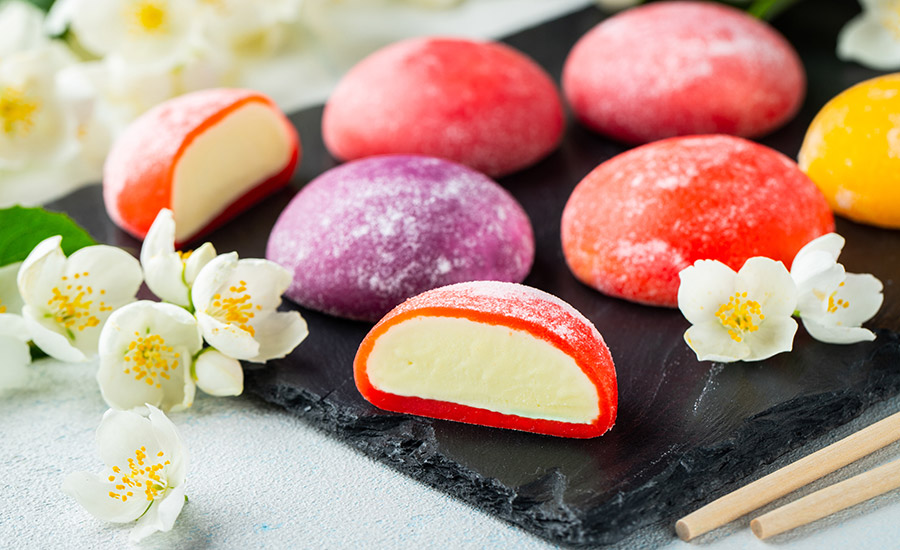
Pecan Deluxe Marketing Coordinator Amanda Cardinal continues that today’s social media landscape also plays a major role.
“Even outside of the traditionally inclusion-centric markets like ice cream and frozen yogurt, inclusions have become imperative. Cottage cheese is having a moment right now thanks to TikTok trends and diet hacks,” she reveals. “It is imperative for dairy processors to capitalize on these trends by innovating in the space, which inclusions offer a simple and easy way to do. Granolas, crunches, and clusters are a great way to reinvigorate this old classic.”
Providing a sales pop
Looking at ice cream, some the hottest inclusions right now are textured variegates and popping candy. “The variegate gives you the ribbon component that you are looking for and the cookie provides texture and additional crunch to really differentiate the product,” Waters says. “Popping candy has made a strong comeback as a favorite item in hard pack ice cream and shakes. It is more interactive and fun than the usual crunch and many flavor profiles marry well with it.”
Pecan Deluxe is seeing a lot of interest around global inspired inclusions. Mochi has been huge in the ice cream space, and the interest around its latest product, Mochimallow, has been no exception, Cardinal says.
Inclusions such as cookie dough, cake bits, and sprinkles are also highly popular as bakery-inspired flavor systems increase in popularity in North American ice cream, Lisa Jackson, director of marketing at Kalamazoo, Mich.-based FlavorSum LLC, tells Dairy Foods. “Mintel further reveals that texture-related terms such as ‘chunky,’ ‘smooth,’ and ‘crunchy’ dominate the charts in ice cream launches across the United States,” she says.
Looking more specifically at ice cream bars, a recent FlavorSum study on the topic reveals inclusions appeal to about 50% of consumers who eat dipped bars, with peanut and bits of caramel popular options, according to their survey.
“Recent innovations showcase bits of almond, peanut butter chips, cinnamon cookie bits, and coconut shavings as ingredients that add texture,” Jackson states.
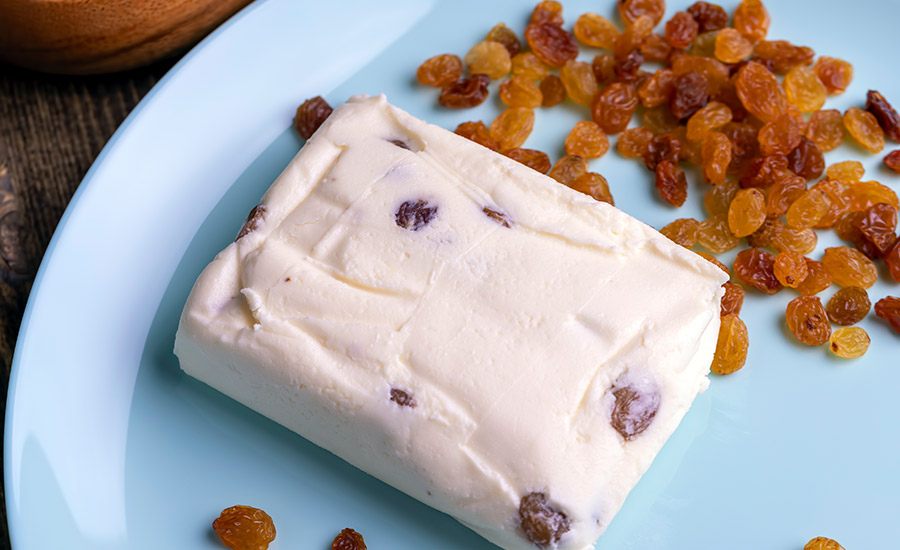
Yogurt is another avenue for inclusions, according to Jackson. “In a recent Innova study, [it] found that 46% of global consumers find flavor to be the No. 1 purchase driver for yogurt. Many yogurt producers deliver flavor through fruit preparations mixed into product and through granola or candy bits as add-ins,” Jackson explains. “In dairy yogurt, people tend to prefer products that are traditional, local, and suitable for everyday consumption. Flavor profiles like strawberry, vanilla, peach, and blueberry top the list for most launches globally.”
Portland, Ore.-based Icon Foods works exclusively in the clean label, no-added-sugar space. In this segment, the inclusions seeing the greatest level of interest are flavor bits, which are small, roundish morsels that come in a variety of flavors.
“They add fruit flavors without the sugars,” says Icon Foods’ CEO Thom King. “Panned inclusions are also hot right now, such as candy-coated chocolate (like an M&M) in a variety of colors and flavors, like peanuts, cinnamon dolce, and white chocolate. They add color, texture, and downright excitement to the frozen dessert experience.”
Health benefits
Inclusions certainly do their job regarding adding flavor to dairy products, with consumers often clamoring for ice cream toppings, for example. Inclusions also can provide a “cherry on top” in terms of providing health benefits, manufacturers stress. “No sugar added,” “low sugar,” “reduced sugar,” “added protein,” “gluten-free” and “made with natural ingredients” are among the health claims inclusions often make.
“One example could be a fruit-flavored granola that uses protein crisps to add additional nutritional benefits to dairy products like ice cream and yogurt,” Waters maintains. “Adding items that contain fruit pieces and nuts (praline or fat coated) also provide some feel-good aspects to dairy products like ice cream when they are usually seen as a decadent treat. The added perception of healthy items can make a product feel less like a treat and more like something that is also good for you.”
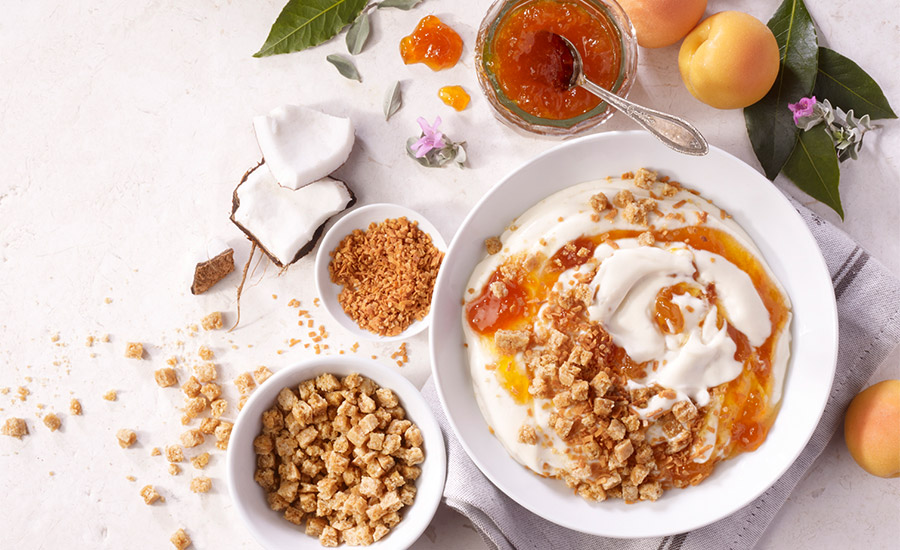
Balchem is seeing a trend in inclusions that contain components with relaxing properties and that have a gut health benefit, i.e., increasing probiotic and fiber, “Even products with a ‘health halo’ can contribute to benefiting the consumer; for example honey,” Fitzgerald relays. “Although honey is a sugar/sugar substitute, consumers may perceive honey to be a better-for-you option versus other types of sugars or sugar substitutes.”
Inclusions safety
Before adding inclusions, there are two things dairy processors must consider: food safety and cost. Regarding food safety, Pecan Deluxe’s Waters says it has never been so important or visible as it is today.
“We have a stringent cleaning program and food quality system that ensures standards are not only met but exceeded,” he stresses. “Thanks to certifications like SQF (Safe Quality Food), we are not only holding ourselves accountable but asking others to help us learn and get better on an annual basis. If you get complacent, that’s when issues start to creep in and wreak havoc on everyday operations.”
“All products are produced to the highest quality and safety standards preventing physical, chemical, and biological risks,” Pecan Deluxe’s Cardinal continues. “Analytical methods are used to ensure our products meet company, customer, and regulatory requirements. Products are guaranteed, and certificates of analysis are available to customers for physical, chemical, and microbiological requirements.”
All of Icon Foods’ products are manufactured in facilities with SQF level II certification. “None of the inclusions have compounds that are capable of growing, supporting or spawning pathogens, yeasts or molds,” King stresses. “The ingredients are clean and simple and go beyond adding flavor and texture but can drive down the freezing depression point as well as water activity, thus extending shelf life.”
At Balchem, inclusion products must follow a Hazard Analysis Critical Control Point (HACCP) plan to ensure its safety, Fitzgerald adds.
Weighing the cost of inclusions
In terms of dairy processors weighing costs of inclusions, consumers are willing to pay a premium if they see the value or benefit, Fitzgerald explains.
“Examples of such benefits include positive health attributes, impacting mental health or creating a positive or happy mood, and using premium ingredients, Balchem’s marketing manager notes. “Considering cost savings, our textured variegates can be utilized with other inclusions or allow our customers to simply remove them altogether but still deliver on that texture expectation.”
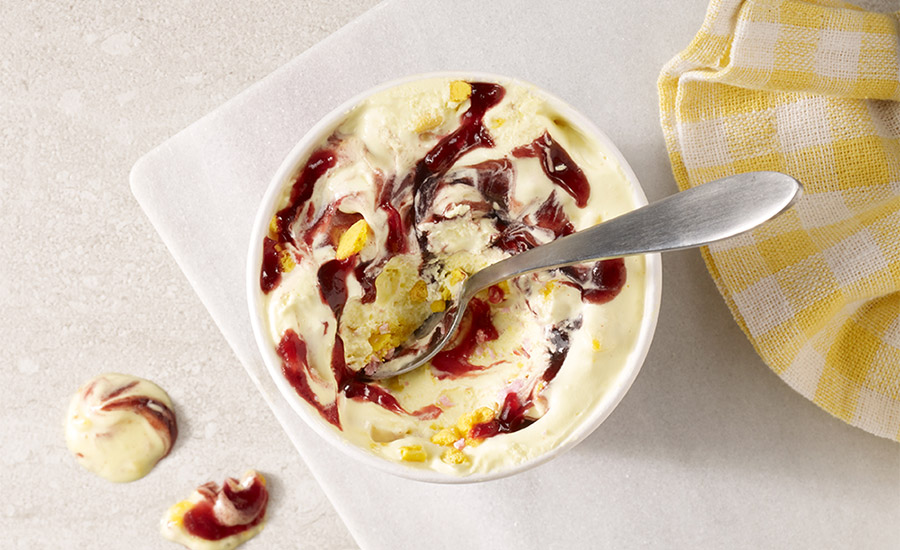
Fruit can be expensive to add as an inclusion. Additionally, unless aseptically packed, fruit can have a tight shelf life, King notes, all of which lead to increased cost of goods sold. However, “[i]nclusions can cost less than real fruit and the real payoff is low added sugar on the nutritional fact panel,” he says.
Waters acknowledges that adding extra cost to a product or product line is always a delicate dance as no one wants to make something more expensive. However, if a product is stagnant or the brand needs something to generate some interest and kick-start sales, an inclusion can go a long way by pairing it with staple offerings.
“If you take chocolate ice cream that has a basic caramel variegate and add a honeycomb toffee, it could be relabeled as a ‘turtle crunch’ with the addition of one ingredient,” he says. “We tend to think about margin as the sole market of success, but if you are losing business to someone else, then margin really doesn’t mean as much. People margin themselves out of business every day.”
It has been proven time and time again that novelty sells, Cardinal continues. “In recent years, we’ve seen more and more brands pop up that rely on repeat business from LTOs (limited-time offers). Their success has proven that customers are constantly looking for new experiences, especially when those are quality experiences that can keep them coming back,” she says. “Inclusions are key for adding novelty in the dairy sector, and shaping a quality experience that will keep consumer interest, vastly outweighing the cost.”
Inclusions’ future
Simply stated, the future for inclusions looks good. Whether it’s a crunchy granola bite in yogurt or a smooth fudge variegate in ice cream, inclusions play a big role in multi-sensory food experiences — and add visual excitement.
“And what better place to showcase bold product imagery than on social channels,” says FlavorSum’s Jackson, adding the Tastewise platform offers insights into inclusions people are noting on social media. “Fourteen percent of consumers ages 18 to 24 note ‘good social image’ as the most important driver of enjoyment and pleasure in food [according to Innova]. As social media adoption ramps up, we expect brands will continue to explore creative launches with unique or recognizable inclusions to draw an audience.”
Balchem also has a consumer insights platform named TrenDish, where future trends in ice cream are shared. “Some future inclusion trends include spicy flavors, nostalgic flavors, e.g., cereal, premiumization, indulgence, health halo (botanicals, honey, reduced or no sugar, gut health, reduced or low calorie),” Fitzgerald notes.
Looking more specifically, flavors and textures, as well as mini-marshmallows and variegates will be a big part of inclusions’ future, predicts Icon Foods’ King, who adds the no-sugar-added space is an “open territory for us, so the possibilities are endless. We will be mixing up spicy, sweet and umami into our pallet of flavors in 2024. Stay tuned,” he concludes.



